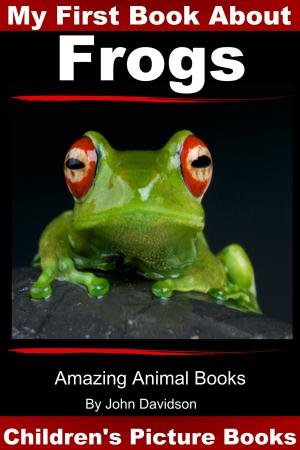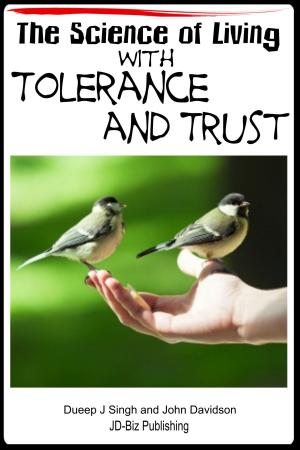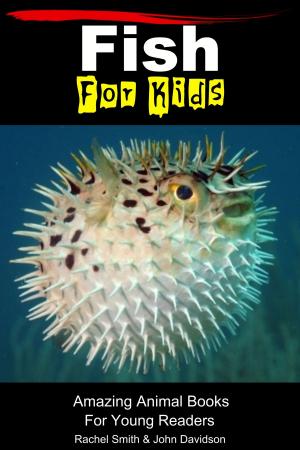| Author: | John Davidson | ISBN: | 9781301645305 |
| Publisher: | JD-Biz Corp Publishing | Publication: | October 16, 2013 |
| Imprint: | Smashwords Edition | Language: | English |
| Author: | John Davidson |
| ISBN: | 9781301645305 |
| Publisher: | JD-Biz Corp Publishing |
| Publication: | October 16, 2013 |
| Imprint: | Smashwords Edition |
| Language: | English |
Bestselling author John Davidson presents "Chinchillas For Kids – Amazing Animal Books For Young Readers". Beautiful Pictures and easy reading format will help children fall in love with chinchillas. This is one of over 20 books in the Amazing Animal Books for Young Readers Series.
Lots of facts and photos will help your children learn about this wonderful animal. Children are given a well-rounded understanding of chinchillas: anatomy, feeding habits and behavior.
*** You and your kids will love learning about chinchillas***
Table of Contents
- Introduction
- What is a Chinchilla?
- What a Chinchilla Looks Like
- Habitat
- Chinchilla Life Cycle
- The Way Chinchillas Talk
- Chinchilla Defense Mechanisms
- Chinchilla Diet
- Chinchilla Table Manners
- Chinchilla Conservation: Working to Save an Endangered Species
- Efforts to Save the Chinchilla
- Chinchillas as Pets
- Giving a Chinchilla a Home in Your House
- Domestic Chinchilla Diet
- Chinchillas as Social Animals
- Dangers to a Chinchilla in Your Home
- Unique Chinchilla Facts: What Makes a Chinchilla so Special?
- Where to Visit a Chinchilla
- Photo Credits
- Read More Amazing Animal Books
- About the Authors
Chinchilla Facts
Many animal babies are born with all their fur, or complete with feathers, but the chinchilla kit is one of the few animals that is born with its eyes wide open. Even puppies are born with their eyes closed!
Chinchillas cannot get their fur wet, so instead of bathing in water, chinchillas use volcanic ash to clean their fur. This ash is found in the mountains where chinchillas live in the wild. When chinchillas are kept as pets, the chinchillas owner must purchase ash for the chinchilla to bathe in several times a week.
Chinchillas have very special little hands that can grab and hold items in much the same way that a human grabs and holds items.
Chinchillas are highly unique because they are one of the few species in the wild that are monogamous. This means that they choose a partner, and keep that same partner for life.
While all chinchillas are small in size, especially compared to more common mammals like dogs and cats, the chinchilla’s body size is interesting because unlike most other mammal groups, the chinchilla females are usually a bit larger than the males. This is seen more often in spiders, and even birds, but very rarely in mammals.
Most wild chinchillas are grey or brown in color, while domestic (pet) chinchillas are the more colorful, with white, beige, and violet being common.
Wild chinchillas in the Andes mountains rarely actually drink water because they eat a lot of fruits and succulent plants. Succulent plants are plants in the cactus family that hold a lot of water in them. The water inside the fruits and plants that the chinchilla eats gives them most of the water they need to live.
Bestselling author John Davidson presents "Chinchillas For Kids – Amazing Animal Books For Young Readers". Beautiful Pictures and easy reading format will help children fall in love with chinchillas. This is one of over 20 books in the Amazing Animal Books for Young Readers Series.
Lots of facts and photos will help your children learn about this wonderful animal. Children are given a well-rounded understanding of chinchillas: anatomy, feeding habits and behavior.
*** You and your kids will love learning about chinchillas***
Table of Contents
- Introduction
- What is a Chinchilla?
- What a Chinchilla Looks Like
- Habitat
- Chinchilla Life Cycle
- The Way Chinchillas Talk
- Chinchilla Defense Mechanisms
- Chinchilla Diet
- Chinchilla Table Manners
- Chinchilla Conservation: Working to Save an Endangered Species
- Efforts to Save the Chinchilla
- Chinchillas as Pets
- Giving a Chinchilla a Home in Your House
- Domestic Chinchilla Diet
- Chinchillas as Social Animals
- Dangers to a Chinchilla in Your Home
- Unique Chinchilla Facts: What Makes a Chinchilla so Special?
- Where to Visit a Chinchilla
- Photo Credits
- Read More Amazing Animal Books
- About the Authors
Chinchilla Facts
Many animal babies are born with all their fur, or complete with feathers, but the chinchilla kit is one of the few animals that is born with its eyes wide open. Even puppies are born with their eyes closed!
Chinchillas cannot get their fur wet, so instead of bathing in water, chinchillas use volcanic ash to clean their fur. This ash is found in the mountains where chinchillas live in the wild. When chinchillas are kept as pets, the chinchillas owner must purchase ash for the chinchilla to bathe in several times a week.
Chinchillas have very special little hands that can grab and hold items in much the same way that a human grabs and holds items.
Chinchillas are highly unique because they are one of the few species in the wild that are monogamous. This means that they choose a partner, and keep that same partner for life.
While all chinchillas are small in size, especially compared to more common mammals like dogs and cats, the chinchilla’s body size is interesting because unlike most other mammal groups, the chinchilla females are usually a bit larger than the males. This is seen more often in spiders, and even birds, but very rarely in mammals.
Most wild chinchillas are grey or brown in color, while domestic (pet) chinchillas are the more colorful, with white, beige, and violet being common.
Wild chinchillas in the Andes mountains rarely actually drink water because they eat a lot of fruits and succulent plants. Succulent plants are plants in the cactus family that hold a lot of water in them. The water inside the fruits and plants that the chinchilla eats gives them most of the water they need to live.















